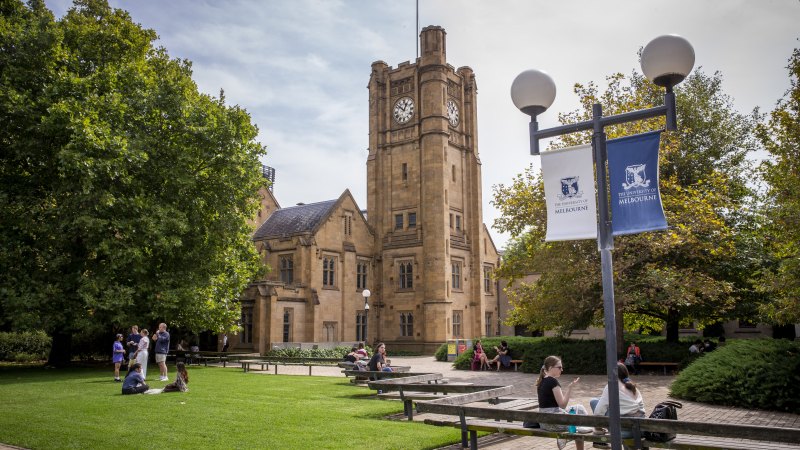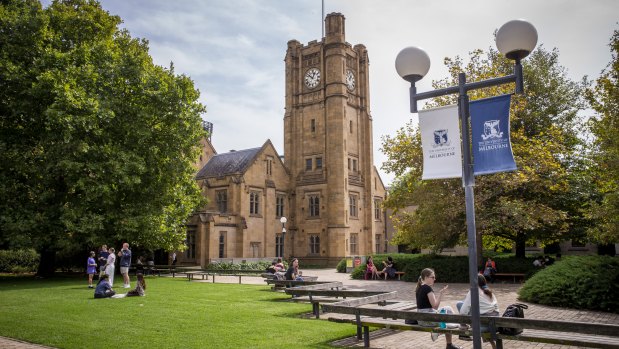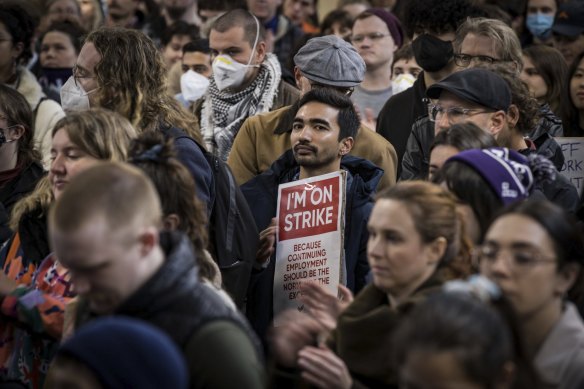Save articles for later
Add articles to your saved list and come back to them any time.
Melbourne University has held its spot in the world’s top 50 universities, but all Australian universities in the top 200 have slipped in the latest rankings.
The drop follows an overhaul of the methodology used to determine the rankings, but experts say it could also be due to student-to-staff ratios, under-investment in research and a need for Australian universities to stay competitive to attract international talent.
The Times Higher Education World University Rankings 2024 rates 1904 universities and has increased from 13 performance indicators to 18, including research, teaching, research quality, research environment, international outlook and industry. The rankings have been produced for 20 years.
Melbourne University dropped three places to 37 from last year, while Monash University, the second-highest ranked in Australia, dropped out of the top 50, falling 10 places since last year to 54.
Six Australian universities were in the top 100 and 11 in the top 200. Sydney University fell to 60th from 54th and Adelaide University had the largest drop – from 88th to joint 111th.
Melbourne University is Australia’s best, again, but slipped from last year’s ranking.Credit: Wayne Taylor
There is a range of annual university rankings, including Quacquarelli Symonds, which ranked three Australian universities in the world’s top 20 for the first time in June, and the Academic Ranking of World Universities. The Times rankings are considered to be among the most prestigious.
Australian universities have ranked poorly in student-to-staff ratios – plummeting to the bottom 15 per cent of the universities ranked by The Times.
Teachers and staff at universities around Australia have taken industrial action this year, calling for an end to the sector’s heavy reliance on casual labour and improvements to pay, job security and workloads. University of Melbourne staff have gone on repeated strikes, while Monash University staff are preparing for a 48-hour strike on October 9.
Melbourne University union members and students gather to strike in May after delays in reaching an agreement with the university on pay and conditions.Credit: Darrian Traynor
University rankings help universities attract international students. The sector’s peak body, Universities Australia, estimates international education contributed $29 billion to the economy in 2022.
But the rankings are also controversial. In 2022, the Productivity Commission warned in its interim report on Australia’s education system that rankings, which can be heavily weighted to research output, detracted from universities’ incentive to invest in quality teaching.
Higher education expert Professor Andrew Norton believes too much weight is put on them.
“To me, it’s combining a whole lot of indicators – do they all add up to anything meaningful?” he said.
Higher education expert Andrew Norton.Credit: Arsineh Houspian
He said universities sometimes made stark changes based on rankings, which could be detrimental to the demographics they served or the quality of education they provided.
Norton said international students were the key demographic that paid attention to the rankings: “There’s a clear correlation between the fees they can charge international students and the rankings they have in these international surveys,” he said.
In the Times rankings, Australian universities slipped by four points in the international outlook – a possible hangover from the pandemic – due to a reduction in the percentage of international students from 30 per cent to 26 per cent.
Times Higher Education global affairs chief Phil Baty said data from this year’s rankings showed “serious warning signs” that Australia’s universities had not recovered since the pandemic.
“First of all, while Australia is one of the world’s leading university sectors for attracting international talent and collaboration, the relative isolation of the country during the pandemic is showing up in the data to detrimental effect on [the] universities’ ranking positions.”
Baty said the right policy incentives were needed to garner international talent, and despite historically high levels of research quality, under-investment in research signalled a “clear red-light warning” that without change, the sector could fall behind in an “increasingly dynamic, competitive global higher education sector”.
The University of Melbourne remains the highest-ranked Australian university across three major global rankings – Quacquarelli Symonds (14), Academic Ranking of World Universities (35) and the Times.
University of Melbourne vice chancellor Duncan Maskell said it had high scores in all the research-related indicators, reflecting “the outstanding work of the staff at the university and its affiliated institutions”.
Professor Maskell said it was important to acknowledge the different methodologies used to calculate university rankings.
“Changes to these methods which often increase or reduce the weighting applied to specific indicators can have a positive or negative effect on rankings.”
The university scored over 99 in three of the four indicators introduced this year – research
excellence, research influence, and patents – and nearly 90 in a fourth new indicator, research
strength.
Gwilym Croucher, a University of Melbourne associate professor in higher education policy and management, said while university rankings could be useful to understand how universities performed on some measures, they could be narrow. “We have to be careful not to read too much into them,” he said.
He said the methodology change and the pandemic could have affected Australian universities’ rankings, but staff-to-student ratios, depending on how they were measured, were something Australian universities should examine.
Universities Australia chief executive Catriona Jackson said COVID-19’s impact on the flow of international students was evident in the data. Although the sector was recovering, it was important that “we work back to a position of strength”.
“We need the full support of government to continue performing these vital functions [undertaking research and educating skilled workers], which is why the Australian Universities Accord must deliver the funding and policy settings we need to thrive.”
The University of Oxford is the highest-ranked university in the world, followed by Stanford University. Massachusetts Institute of Technology is in third place.
The Morning Edition newsletter is our guide to the day’s most important and interesting stories, analysis and insights. Sign up here.
Most Viewed in National
From our partners
Source: Read Full Article



